Peace Silver Dollar
1921 to 1935
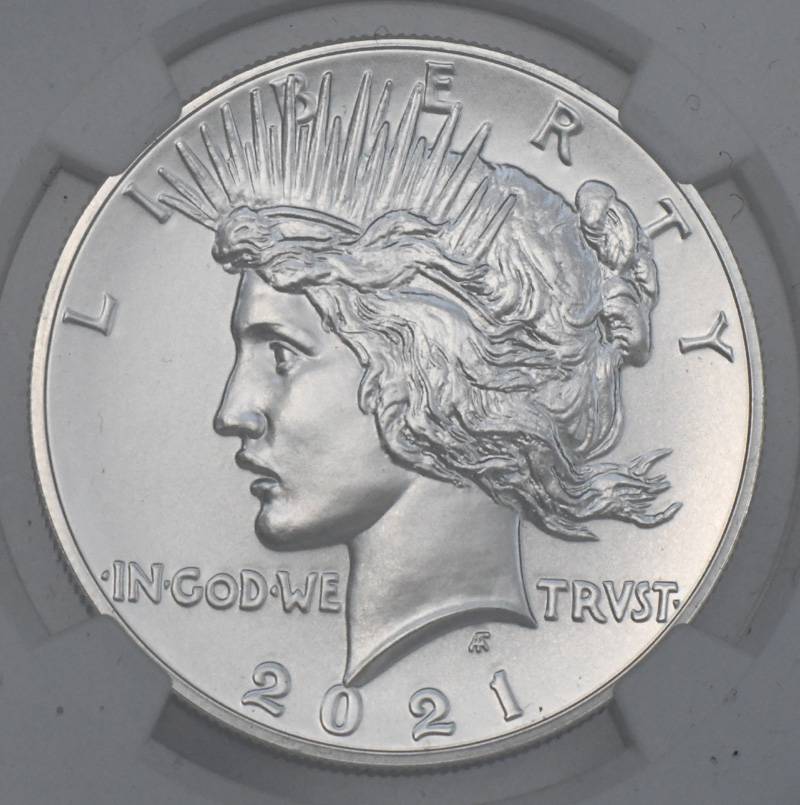 |
Following the end of WW I, it was decided to issue a coin commemorating world peace and thus, while the Morgan dollar had just resumed production, the Peace dollar was designed and released that same year. The reverse featured an eagle standing on a mound. The composition, size, and weight are the same as the previous coins and the issue was minted each year through 1935, when production of silver dollars was halted until 1964, when about 300,000 Peace dollars were made at the Denver mint, only to be melted down soon after because of the decision to produce only clad coinage from that time forward. The 1928 (P) coin is the rarest, being worth several hundred dollars in very poor condition, although several other issues in near perfect condition can only be had for several thousand dollars. |
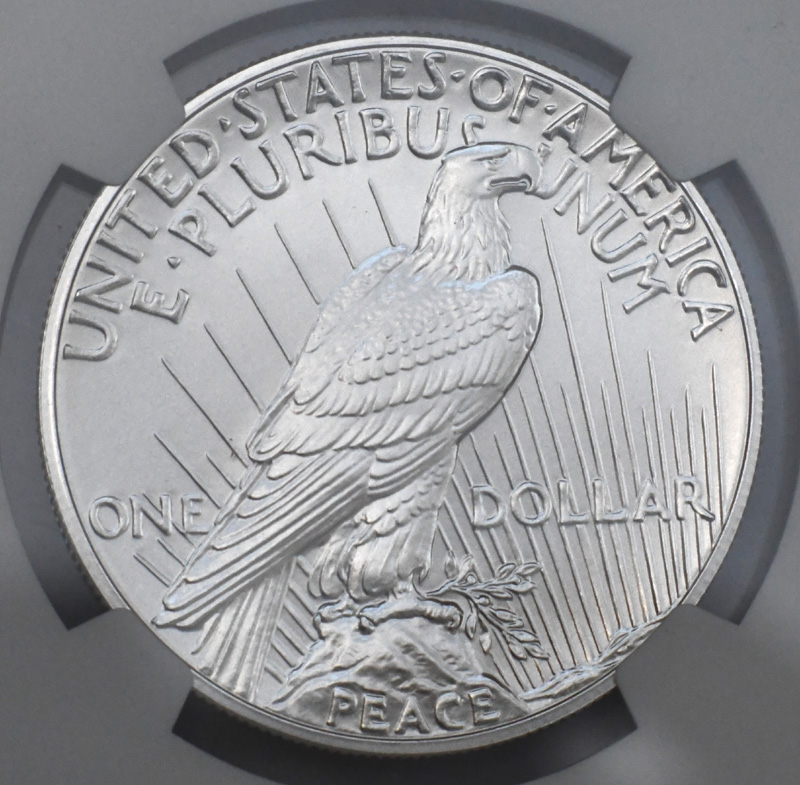 |
| This is a modern restrike of the coin, technically called a commemorative which I bought for the photo here. It is worth about $200. | This the reverse of the coin at left. It is almost pure silver. | |
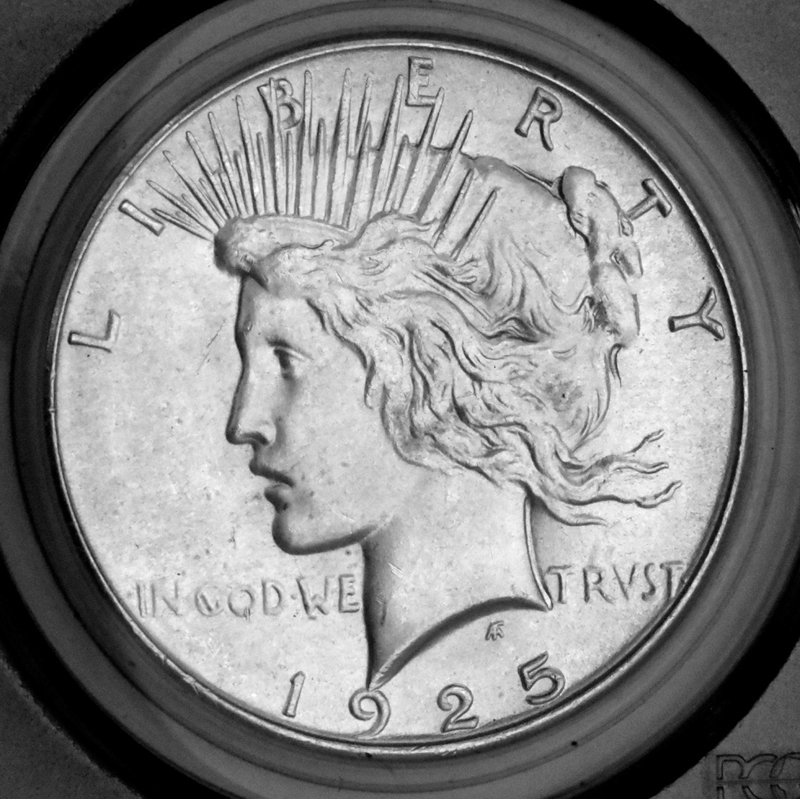 |
|
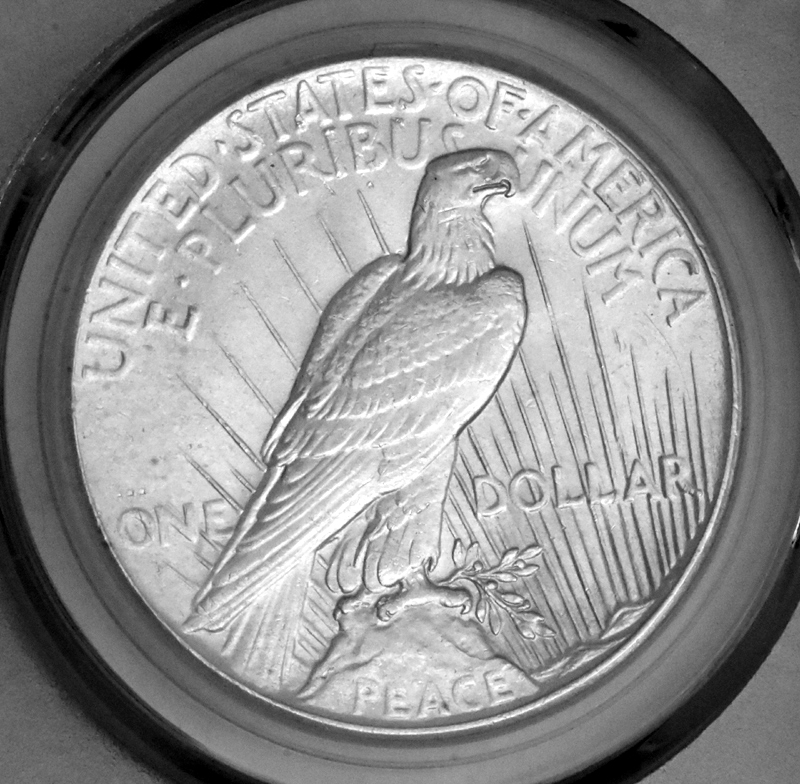 |
| This is the only Peace dollar I own that is both uncirculated and certified to be that way. It is an MS 63 example worth about $50 and is stored in the Red box. I currently have all of the 24 issues of this coin that were put into circulation and one of them is a 1928 (P). |
This is the reverse side of the coin at left. | |
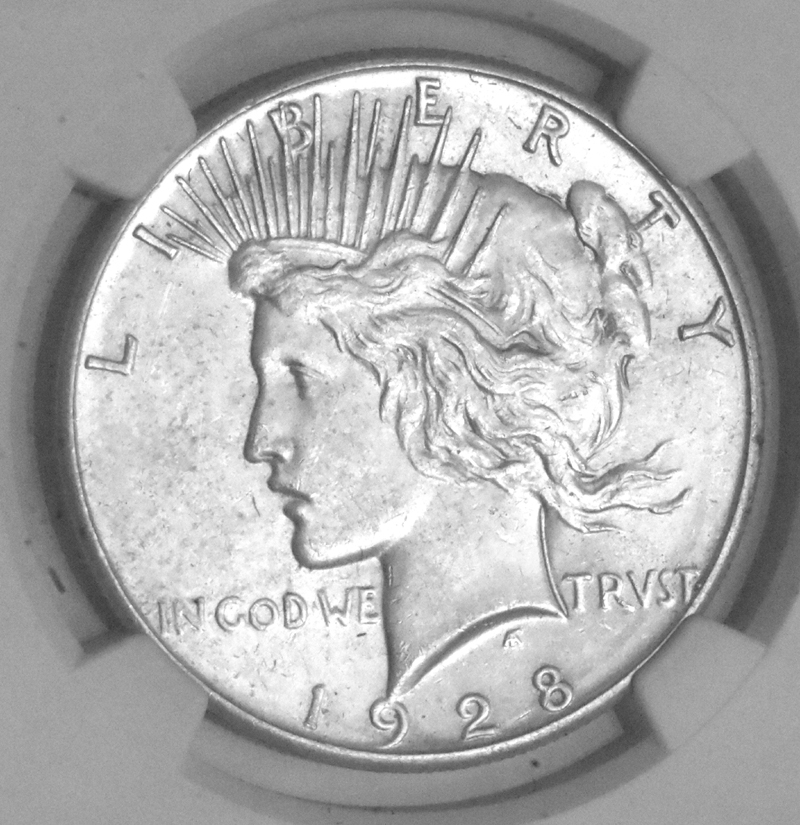 |
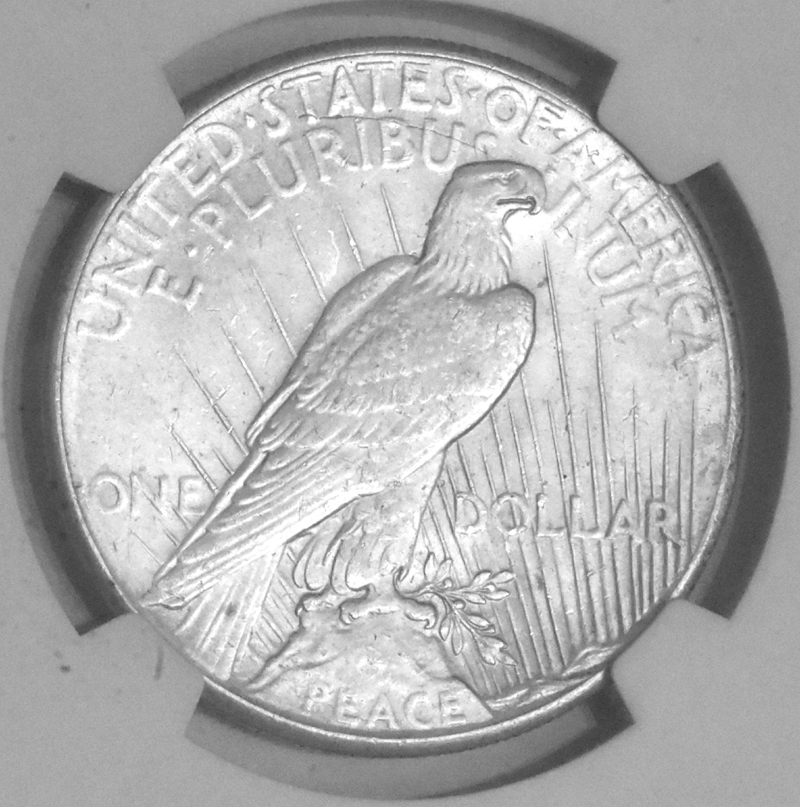 |
|
| This is my rarest Peace dollar; an AU 1928 example worth about $ 350. It is stored in the Red Box. Only 360, 649 of these coins were minted and nobody knows how many survive in this grade. | This is the reverse of the coin at left.
|
| 1922: January 28 Snowfall from the Knickerbocker storm, the biggest-ever recorded snowstorm in Washington, D.C., causes the roof of the Knickerbocker Theatre to collapse, killing 98. February 10: President of the United States Warren G. Harding introduces the first radio in the White House. March 20: The USS Langley is commissioned as the first United States Navy aircraft carrier, having been converted at Norfolk Naval Shipyard from fleet collier Jupiter. On October 17 , Lt. Virgil C. Griffin pilots the first plane, a Vought VE-7, launched from her decks. May 5: In the Bronx, construction begins on Yankee Stadium. May 12: A 20-ton meteorite lands near Blackstone, Virginia. October 3: Rebecca Latimer Felton of Georgia becomes the first female United States Senator, when the governor of Georgia gives her a temporary appointment, pending the election of a replacement for Senator Thomas Watson, who has died suddenly. She will not take office till November 21, and will thus serve for only one day. Date not known: The California grizzly bear becomes extinct. |
| 1925: January 5: Nellie Tayloe Ross becomes Governor of Wyoming, the first female governor in the United States. Twelve days later, Miriam A. Ferguson becomes first female governor of Texas. January 27 - February 1 – The 1925 serum run to Nome, the "Great Race of Mercy", relays diphtheria antitoxin by dog sled across the U.S. territory of Alaska, to combat an epidemic. March 18: The Tri-State Tornado rampages through Missouri, Illinois, and Indiana, killing 695 people and injuring 2,027. It hits the towns of Murphysboro, Illinois; Gorham, Illinois; Ellington, Missouri; and Griffin, Indiana. The storm's damage path was indicated at 235 miles. March 21: Tennessee Governor Austin Peay signs the Butler Act, prohibiting the teaching of evolution in the state's public schools. May 5: Scopes Trial: Dayton, Tennessee, biology teacher John Scopes is arrested for teaching Charles Darwin's Theory of Evolution.June 13: Charles Francis Jenkins achieves the first synchronized transmission of pictures and sound. June 29: The 6.8 Mw Santa Barbara earthquake affects the central coast of California with a maximum Mercalli intensity of IX (Violent), destroying much of downtown Santa Barbara, California and leaving 13 people dead. July 21: Scopes Trial: In Dayton, Tennessee, high school biology teacher John T. Scopes is found guilty of teaching evolution in class and fined $100. September 3: The U.S. Navy dirigible Shenandoah breaks up in a squall line over Ohio en route to Scottfield, St. Louis; 14 crewmen are killed. Date not known: New York City becomes the largest city in the world, taking the lead from London. |
1928: January 16: U.S. murderer Ruth Snyder is executed at Ossining. March 12: In California, the St. Francis Dam north of Los Angeles fails, killing 400. March 21: Charles Lindbergh is presented the Medal of Honor for his first trans-Atlantic flight. April 10: "Pineapple Primary": The Republican Party primary elections in Chicago are preceded by assassinations and bombings. May 10 : The first regular schedule of television programming begins in Schenectady, New York by the General Electric's television station W2XB. May 15: The animated short Plane Crazy is released by Disney Studios in Los Angeles, featuring the first appearances of Mickey and Minnie Mouse. June 17: Aviator Amelia Earhart starts her attempt to become the first woman to successfully cross the Atlantic Ocean. Wilmer Stultz was the pilot. July 6: The world's largest hailstone falls in Potter, Nebraska. September 1: Richard Byrd leaves New York for the Arctic. September 16: The 1928 Okeechobee Hurricane kills at least 2,500 people in Florida. October 12: An iron lung respirator is used for the first time at Children's Hospital, Boston. November 4: At Park Central Hotel in Manhattan, Arnold Rothstein, New York City's most notorious gambler, is shot to death over a poker game. November 18: Mickey Mouse appears in Steamboat Willie, the third Mickey Mouse cartoon released, but the first sound film. Date not known: W2XBS, RCA's first television station, is established in New York City. |